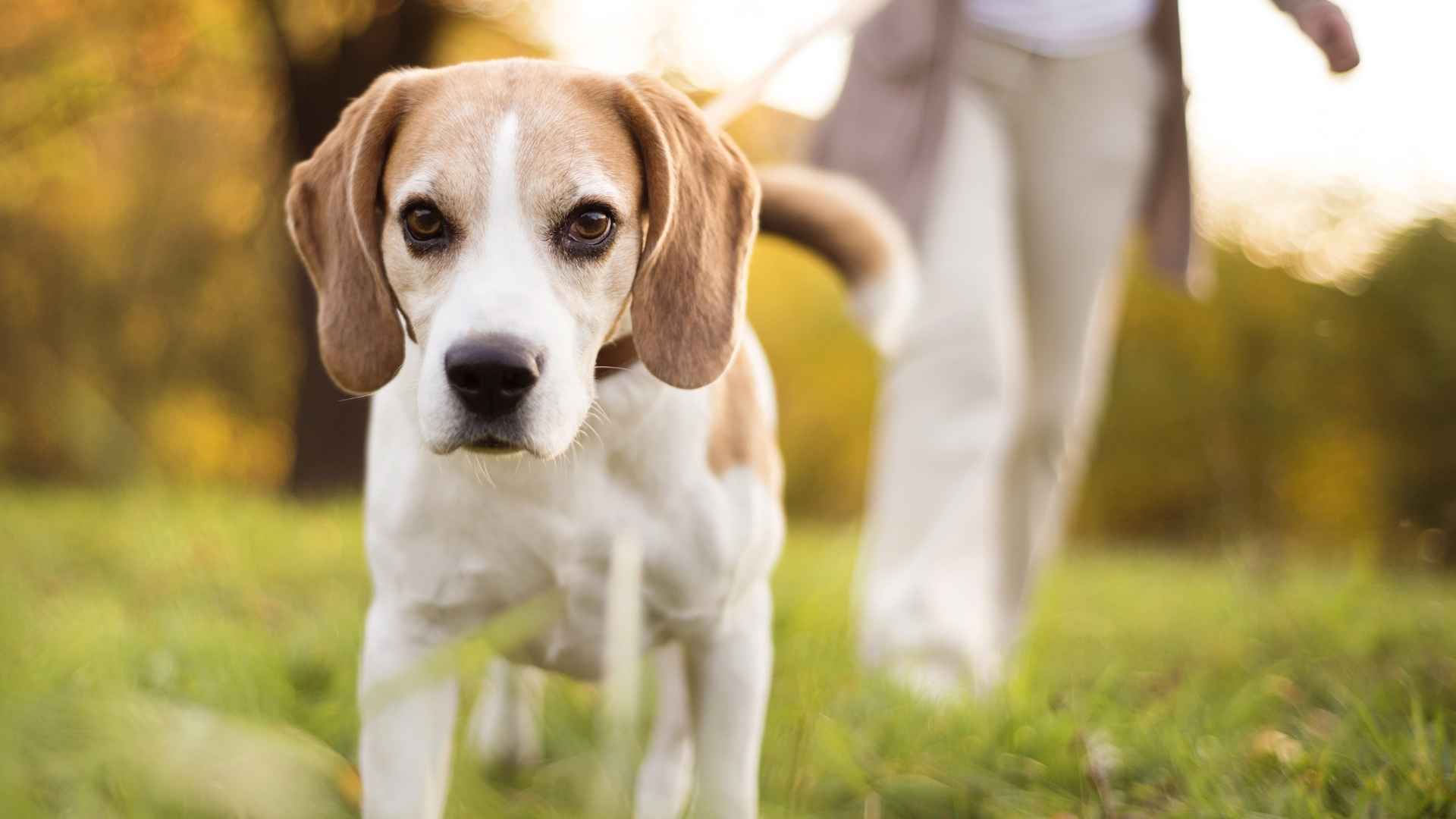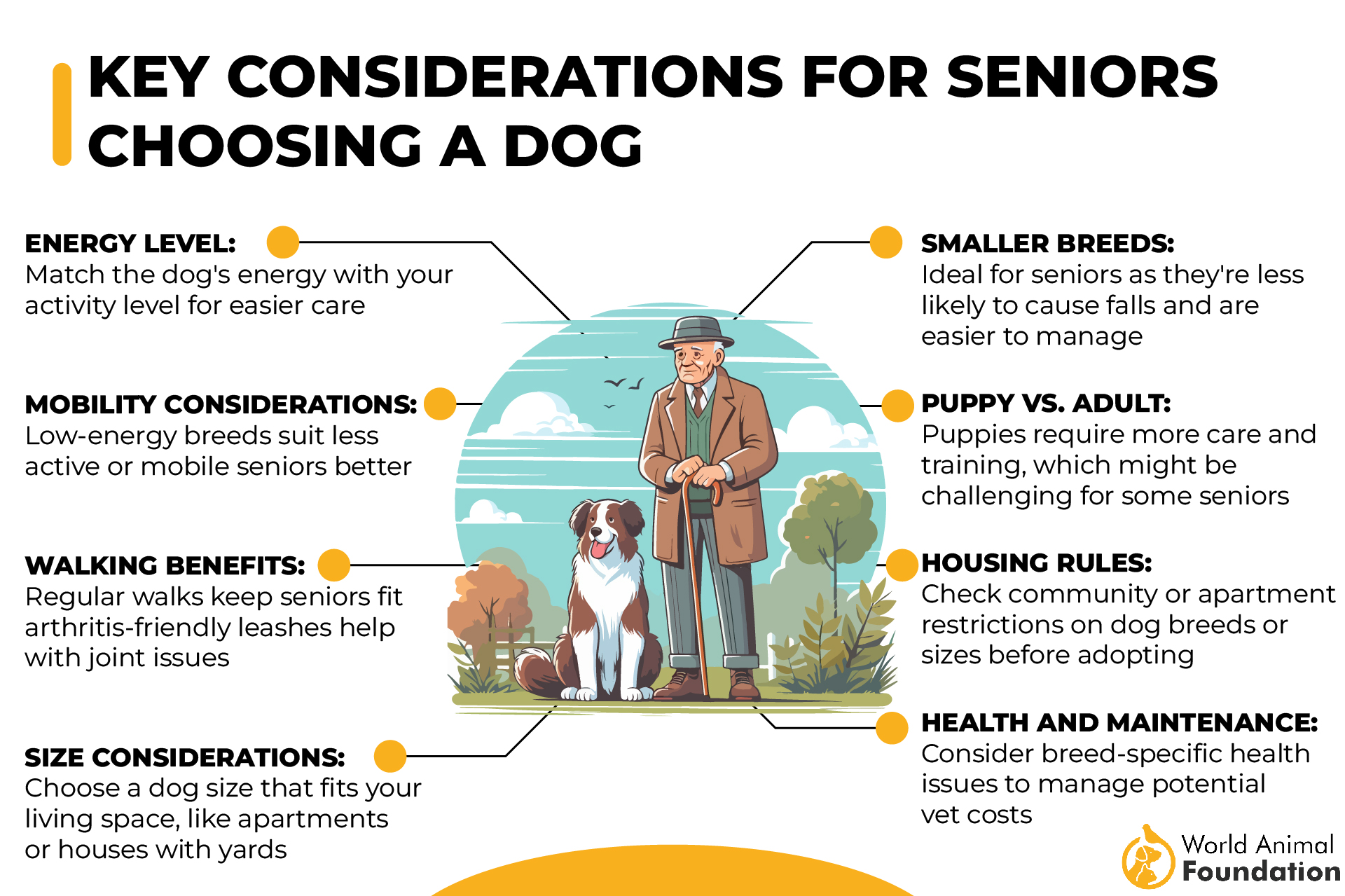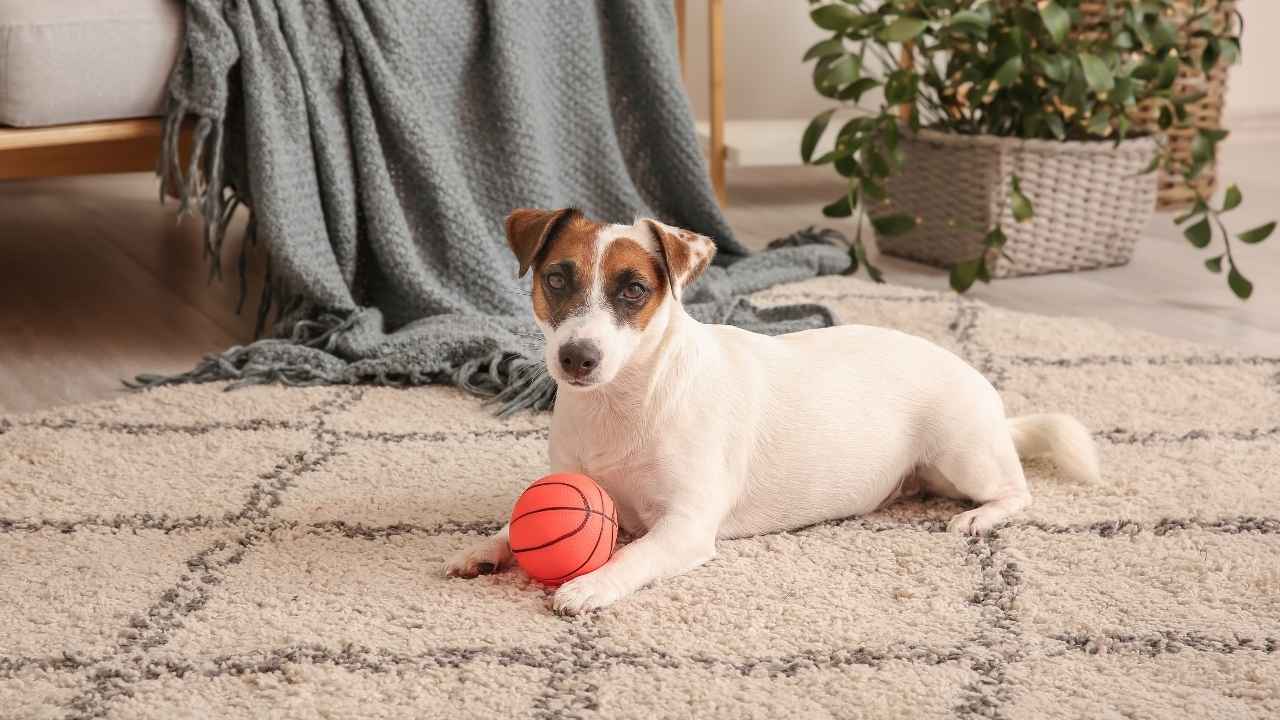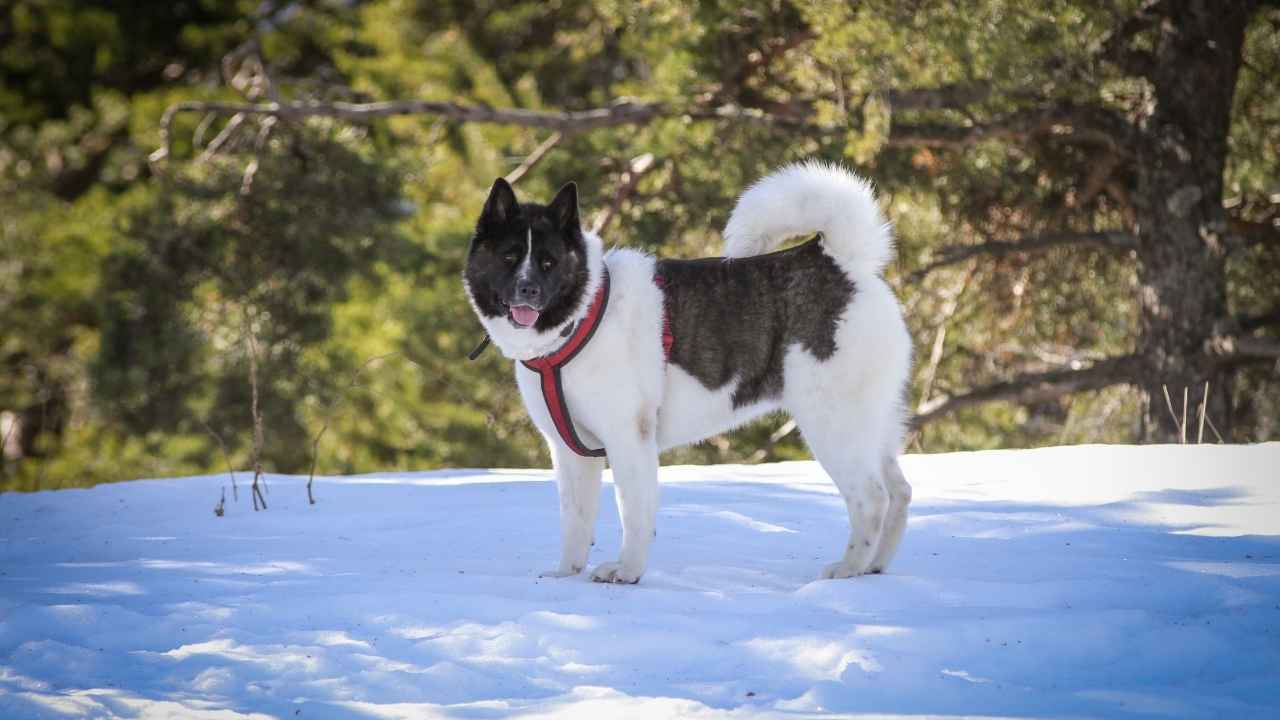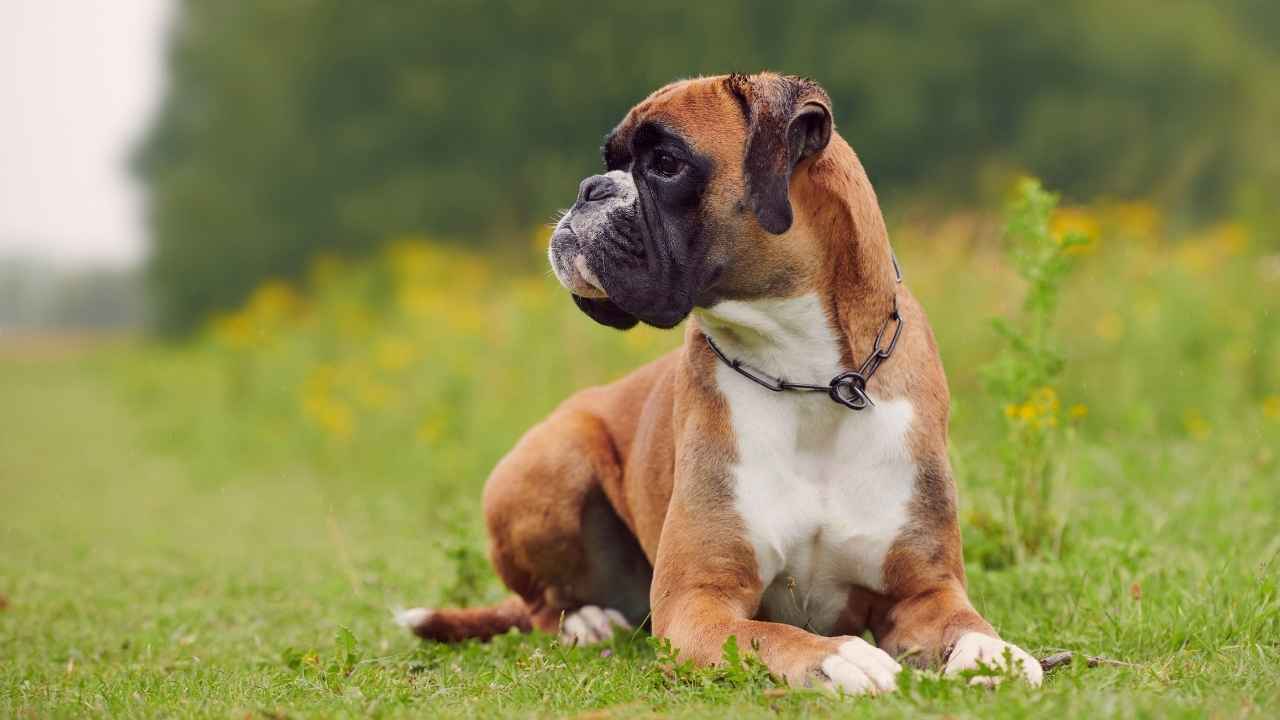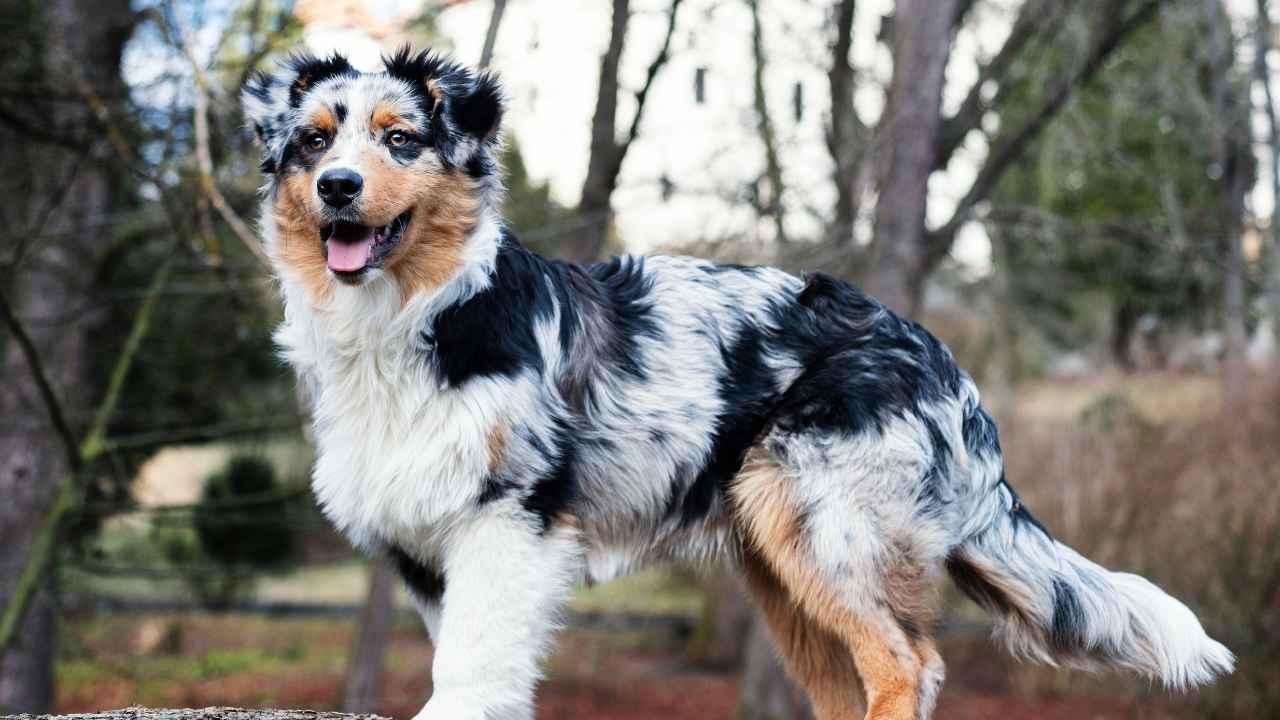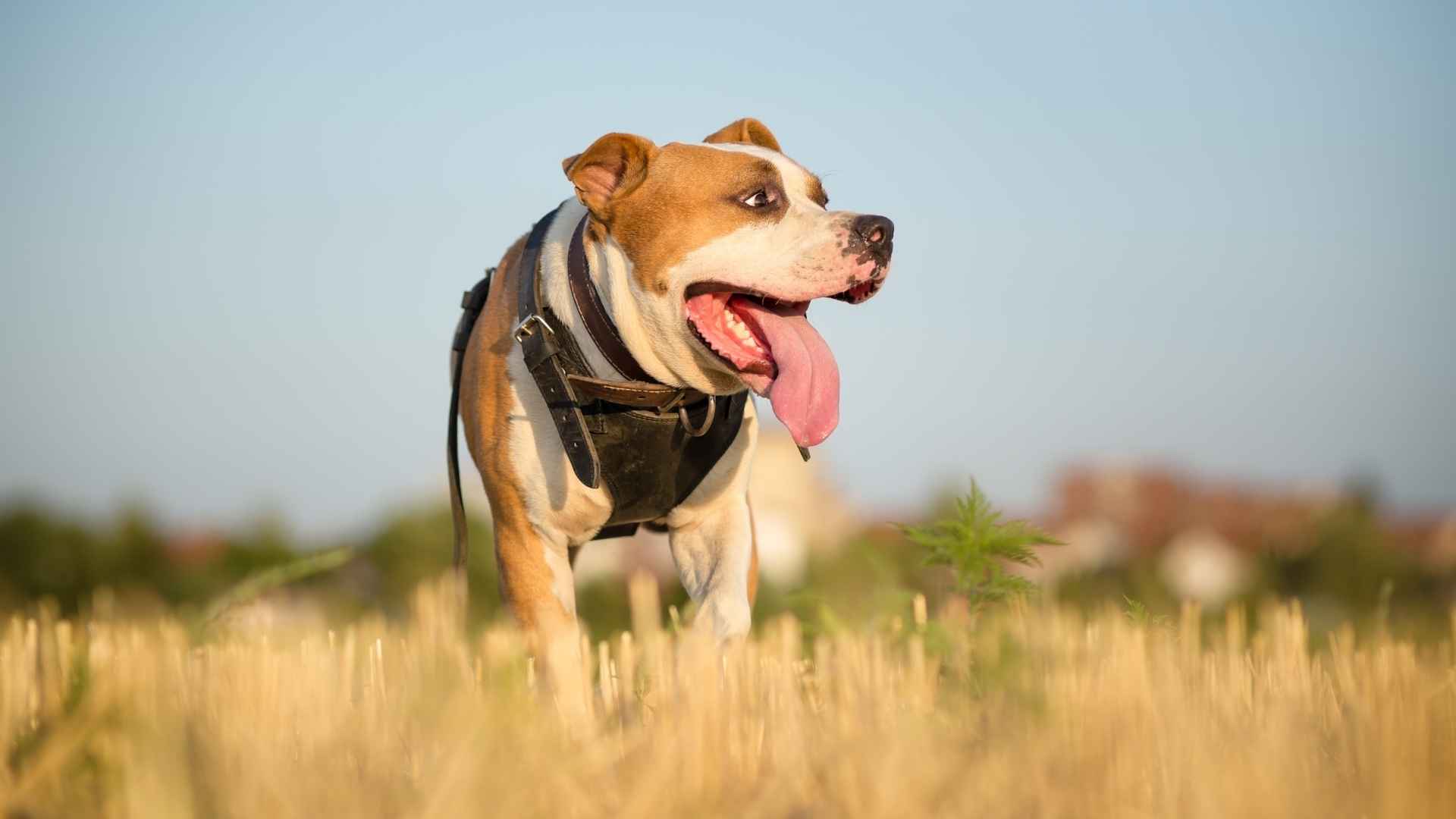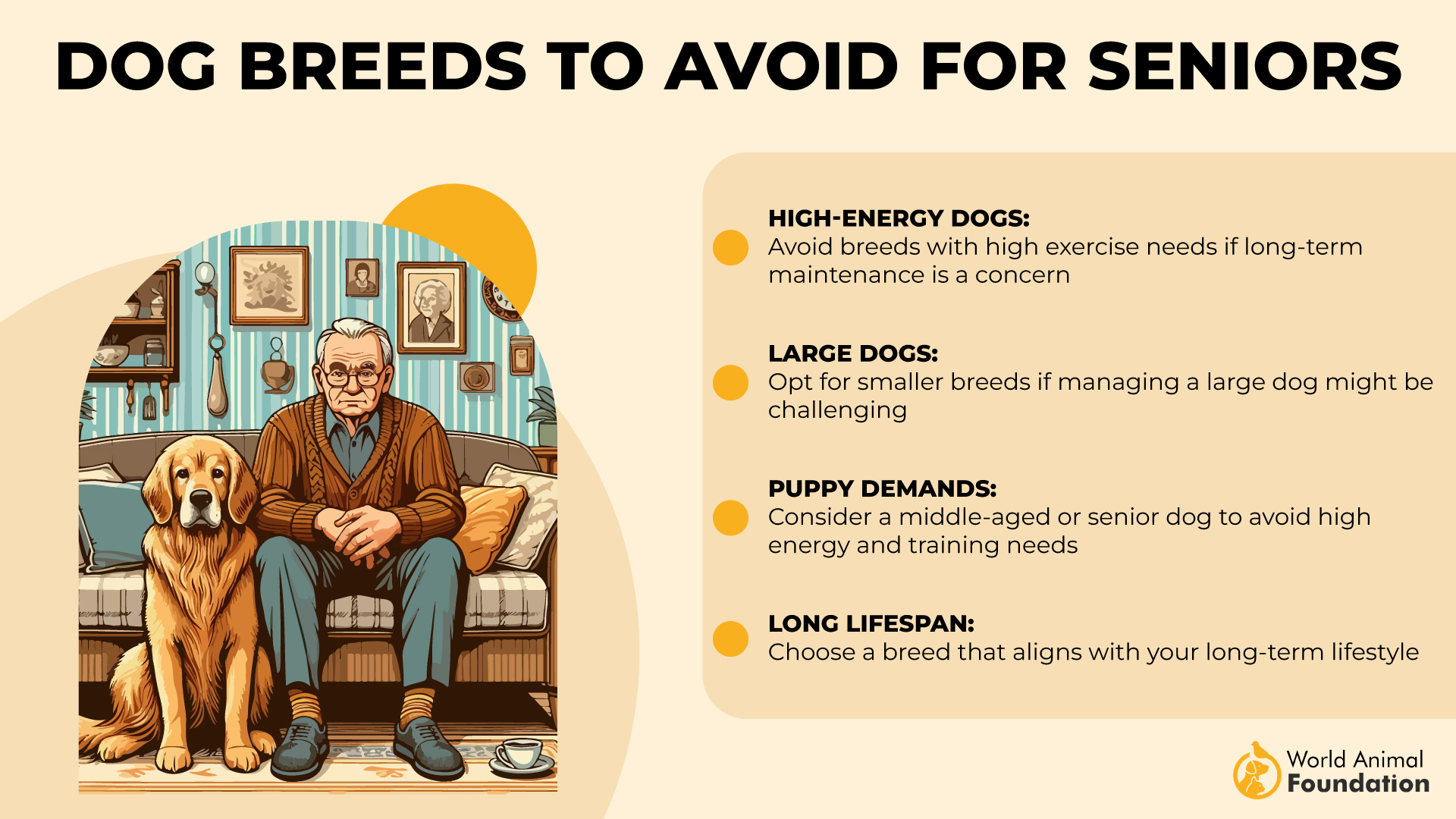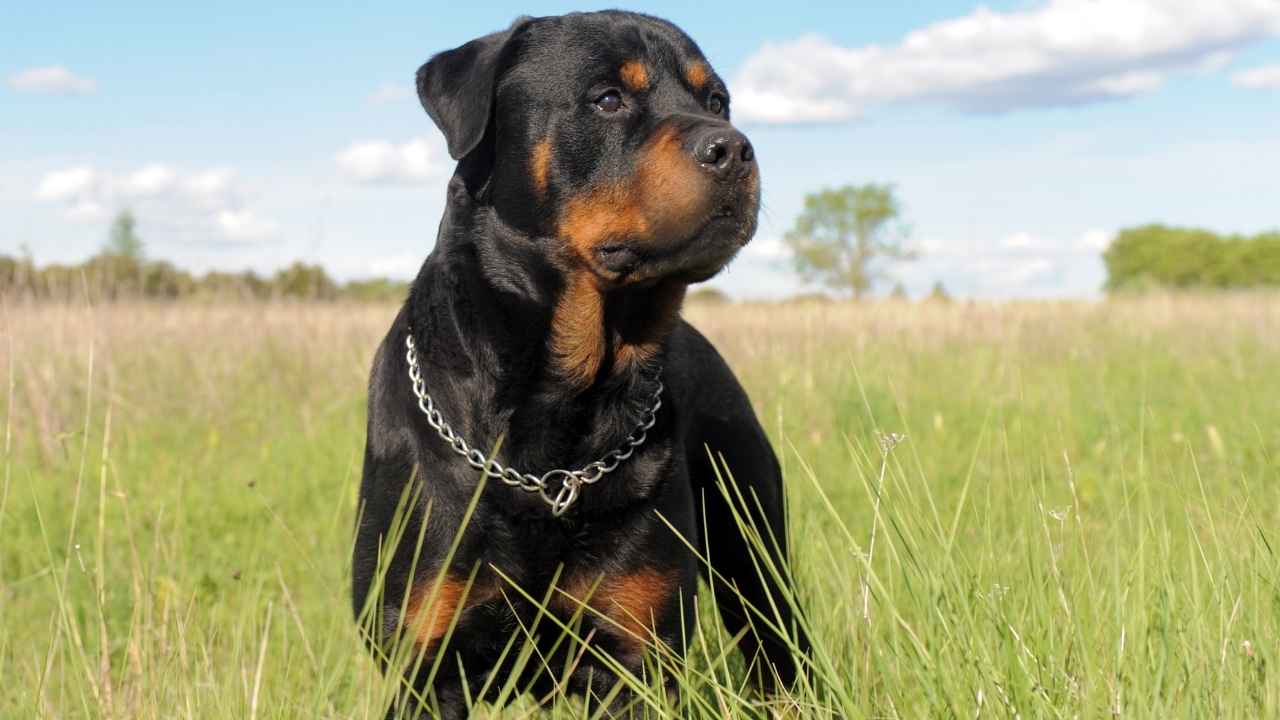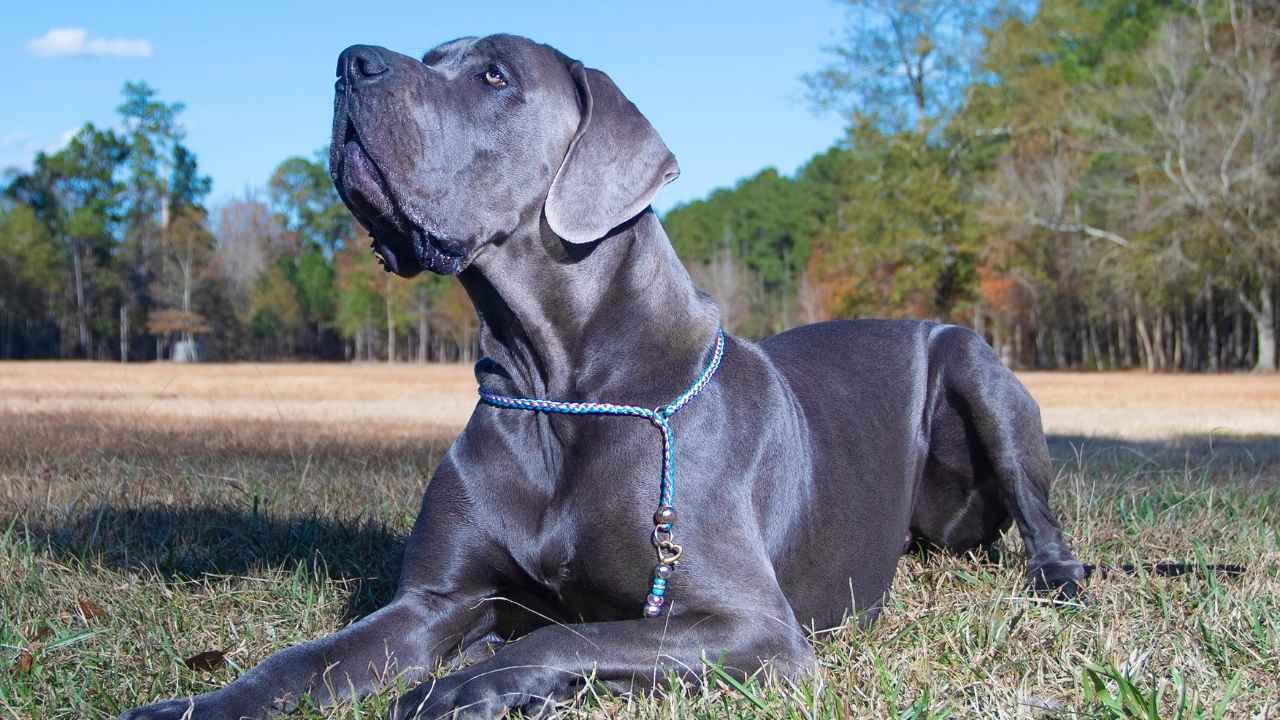Choosing the right guard dog is crucial for seniors seeking a balance of companionship and security. While some breeds are naturally protective, others, due to temperament, size, or energy level, may not be suitable for elderly owners. This article explores the seven worst guard dog breeds for seniors, highlighting those that may require more strength, attention, or training than an older owner can comfortably provide. Understanding these challenges helps seniors make informed decisions, ensuring their safety and enjoyment of a pet that truly complements their lifestyle and offers peace of mind without undue stress.
Choosing the right dog is no trivial matter, especially for senior pet owners. While dogs are great companions, certain breeds can turn into more of a challenge than a blessing. Imagine managing a boisterous firehouse dog with endless energy or a powerful breed that needs constant training—it’s a daunting thought for anyone, let alone an older person.
Unlike other pets, dogs require time, patience, and proper handling. Senior citizens who choose the wrong breed might face a whirlwind of pent-up energy, stubborn behavior, or even destructive tendencies. And while many dogs, like those seen as firehouse dogs, thrive in active settings, they can overwhelm elderly individuals.
Exploring the dynamics of different dog breeds, from high-maintenance to unsuitable for older owners, ensures that other dogs—such as Labrador Retrievers or more sedate breeds—don’t leave seniors struggling with their choice.
Worst Guard Dog Breeds for Seniors
1. Jack Russell Terrier
|
Energy Level |
Extremely high energy |
|
Temperament |
Independent, lively, stubborn |
Jack Russell Terriers, often seen as great companions, are small dogs with a lot of personality, but their boundless energy can make them one of the worst dog breeds for senior owners. Standing at 13–14 inches tall and weighing only 13–17 pounds, as per Britannica, they may seem like the perfect fit for an older person.
However, their origins as fox-hunting dogs reveal their true nature: tireless, independent, and always ready for action.
These small dogs require daily exercise and mental stimulation to prevent destructive behavior, such as digging or barking. Their obstinate tendencies demand extensive training, which can be time-consuming for older owners. Without enough exercise or proper training, these high-energy dogs can become a handful for elderly people with a more sedentary lifestyle.
2. Akita
|
Energy Level |
Moderate to high |
|
Temperament |
Protective, independent, dominant |
Akitas, known for their staunch protectiveness, are large dog breeds with an intimidating presence. Weighing 70–130 pounds and standing 24–28 inches tall, these powerful breeds require a skilled trainer to manage their strong-willed and independent nature. While their protective instincts make them great protectors, their dominance can challenge even experienced pet owners.
Many seniors find Akitas overwhelming due to their size and the extensive training they need. Their double coat also demands regular grooming, making them high-maintenance dogs for older owners.
Without proper training and enough exercise, Akitas can develop bad habits like obstinate tendencies or territorial aggression, making them a poor choice for an elderly person seeking companionship over complexity.
3. Boxer
|
Energy Level |
Exuberantly high |
|
Temperament |
Affectionate, boisterous, energetic |
Boxers are medium-sized dogs known for their affectionate and lively personalities, but their exuberant energy makes them one of the worst dogs for senior citizens. Weighing 65–80 pounds and standing 21–25 inches tall according to PetMD, Boxers are playful companions who thrive on vigorous exercise, such as long walks or canine sports.
However, these sporting dogs are not suitable for a sedentary lifestyle. Their exuberant energy and need for at least an hour of daily exercise can be too much for elderly owners.
Without enough physical stimulation, Boxers may resort to destructive behavior. While they are good companions for active individuals, older people may struggle to keep up with their high energy and playful antics.
4. Australian Shepherd
|
Energy Level |
Extremely high |
|
Temperament |
Intelligent, energetic, herding instincts |
Australian Shepherds, a highly intelligent herding breed, are beautiful but demanding dogs. Weighing 40–65 pounds and standing 18–23 inches tall claims WebMD, they boast boundless energy and an intense drive for physical and mental stimulation. Their exuberance rivals other breeds like Border Collies and Siberian Huskies, but for senior citizens, this energy can quickly become overwhelming.
These dogs require at least an hour of daily exercise and thrive in active lifestyles, making them unsuitable for sedentary senior owners. Their herding instincts, often directed at other animals or even people, can be challenging to manage.
Without proper grooming and obedience training, Australian Shepherds are prone to destructive behavior, making them one of the worst dog breeds for elderly pet owners.
5. American Staffordshire Terrier
|
Energy Level |
High |
|
Temperament |
Loyal, strong-willed, protective |
The American Staffordshire Terrier, often associated with pit bulls, is a powerful breed with a protective nature. Weighing 57 pounds and standing 17–19 inches tall says VCA, they possess muscular builds and strong prey drives. While these dogs can be affectionate with their families, their staunch protectiveness makes them difficult to train for inexperienced or older owners.
For senior citizens, the challenges of handling such a strong-willed dog can be overwhelming. Many owners find their energy and exuberance too much, especially if they lack time for exercise daily.
Without proper training and nail trimming, these high-energy dogs can develop bad habits. Their loyalty and strength are admirable, but they are not the right dog for older individuals seeking a calmer companion.
6. Rottweiler
|
Energy Level |
Moderate to high |
|
Temperament |
Confident, powerful, protective |
Rottweilers, one of the most powerful breeds, are known for their protective instincts and muscular builds. Weighing 80–135 pounds and standing 22–27 inches tall, their sheer size and bite force make them formidable. However, for senior owners, their energy and need for obedience training can be a significant challenge.
These dogs require consistent training and exercise daily to manage their powerful nature. Many seniors find Rottweilers too demanding, especially without the physical strength to handle such large dogs.
While they are great protectors, their staunch protectiveness can lead to territorial behavior without extensive training. For older individuals or those in small living spaces, Rottweilers are high-maintenance dogs that may not be the perfect fit.
7. Great Dane
|
Energy Level |
Moderate |
|
Temperament |
Gentle, loyal, imposing |
Great Danes, often referred to as gentle giants, are undeniably majestic but challenging for older pet owners. Weighing 100–200 pounds and standing 28–32 inches tall as per Orvis, their immense size makes them difficult to manage for an elderly person. Their long legs and powerful stride require ample space, which can be impractical for small living spaces.
Although they are affectionate and loyal companions, their size alone poses logistical challenges, from nail trimming to proper grooming.
Additionally, Great Danes are prone to health issues such as joint problems, adding to their high-maintenance nature. For older individuals seeking a dog that is easier to care for, Great Danes, like many large dog breeds, may not be the best dog breeds for companionship.
Conclusion
Choosing the right dog for senior pet owners is crucial, as some breeds can be more challenging than others. While Labrador Retrievers and Cocker Spaniels are often considered great pets for their affectionate nature, even these breeds can pose issues like ear infections or the need for weekly brushing. Different dog breeds have varying energy levels and care requirements, making it essential to consider lifestyle and ability before committing.
Extremely active dogs, like Australian Shepherds or German Shepherds, may leave senior owners struggling to manage their pent-up energy. Similarly, large breeds, like Great Danes or Rottweilers, are not suited for smaller living spaces or older individuals seeking companionship over physical demands.
For many seniors, smaller, less demanding breeds are often a better choice. While a little dog may seem ideal, even they need proper care and exercise to avoid becoming destructive. Ultimately, thoughtful planning ensures senior dogs become great companions, not overwhelming challenges.
In evaluating the 7 worst guard dog breeds for seniors, it becomes clear that choosing a suitable canine companion involves careful consideration of the dog’s energy levels, temperament, and care needs. Breeds that are overly energetic, large, or require extensive training and exercise may pose challenges for seniors. It’s important for older adults to seek breeds that offer loyalty, companionship, and protection without overwhelming demands. Ultimately, selecting a guard dog should align with the senior’s lifestyle, ensuring that both the dog and owner can enjoy a harmonious and supportive relationship.

